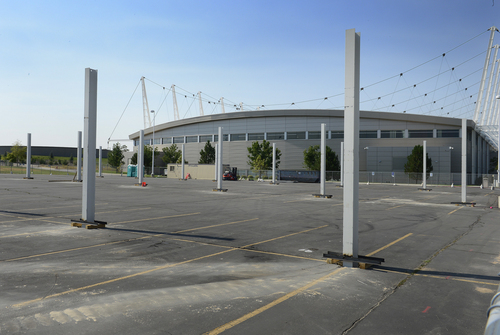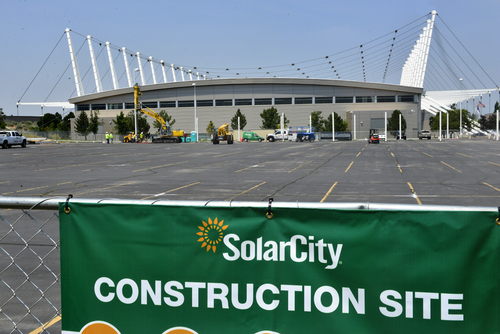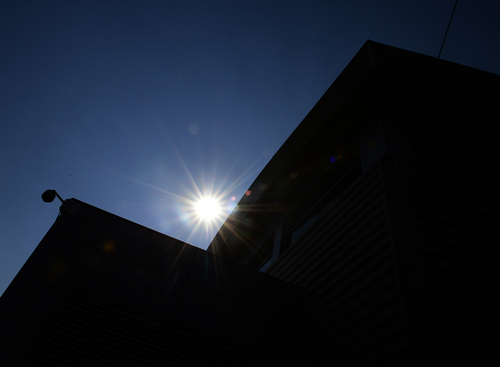This is an archived article that was published on sltrib.com in 2014, and information in the article may be outdated. It is provided only for personal research purposes and may not be reprinted.
Kearns • The Utah Olympic Oval is going solar.
With contributions from the private and public sectors, the oval-owning Utah Olympic Legacy Foundation will unveil plans Monday to install parking canopies in the facility's south lot.
These structures will be topped with solar panels that will generate enough electricity to cut the energy-devouring oval's power bill by 20 percent — nearly $100,000 annually.
And, in doing so, the foundation will establish an example of sustainable building practices that should be an asset if and when Salt Lake City's time comes again to bid for a Winter Olympics, according to executive director Colin Hilton.
"We're doing our best to keep that facility open, active and vibrant," he told the Salt Lake County Council this week during a pitch for a county donation of $200,000 toward the $1.4 million tab.
Hilton got what he wanted.
Council members unanimously endorsed the request — and not just because county Township Services Executive Director Patrick Leary said he had come up with the money from other accounts, so no new allocations were needed.
Several members noted the oval was the centerpiece of a recreational gathering place for Kearns residents, quite worthy of the investment.
"The oval is the heart and soul of our community," agreed Eric Hutchings, a Republican legislator from Kearns and an Olympic Legacy Foundation trustee.
"This facility and the park that surrounds it mean everything to us. We hold our Kearns Hometown Days events there, our "Night Out Against Crime" events. Our big community meetings are in the World Record Lounge," he added, referring to a meeting room whose name recognizes the oval's reputation for having the fastest ice in the world. Seven of speedskating's 11 existing world records were set in Kearns.
"We've become ingrained in the community," said Hilton, pointing to the 750,000 visitors who come to the oval each year for various activities.
He said more than 3,000 solar panels will be attached to the canopies, generating more than 1 million kilowatt hours of electricity in a year.
Hilton predicted the system would pay for itself in five years and save $3.7 million over 20 years.
The story of that accomplishment will be displayed in the lobby of the $30 million building, which was Utah's first LEED-certified structure when it opened in 2001.
"We'll use this story to try to inspire others" to save electricity, Hilton said. "We would love Salt Lake County to be involved in telling that story."
The $200,000 donation made sure of that. The project also has support from Rocky Mountain Power, which is giving the foundation $564,000 over five years, and the Utah Division of Facilities Construction and Management. The state agency included the oval in a wider package of solar projects it was pursuing.
"It's not a government facility," Leary observed, "but the state recognized the importance of the oval to the tourism industry and to the community and put it in there."
Twitter: @sltribmikeg —
Solar unveiling
A formal unveiling of the solar-panel project will take place at 9:30 a.m. Monday at the Utah Olympic Oval, 5662 S. Cougar Lane (4800 West).









